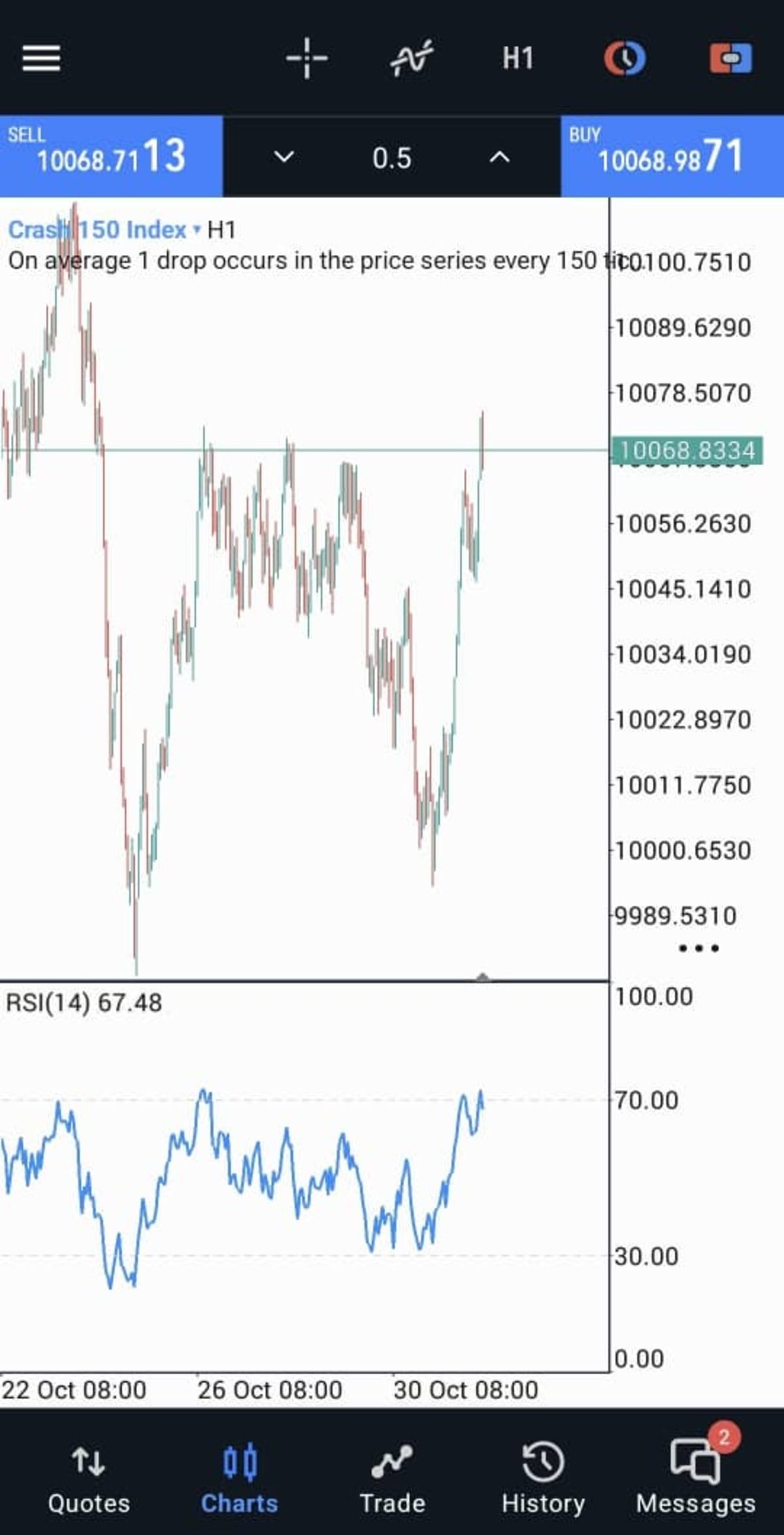If you’ve ever stared at your trading chart, watching those sharp downward spikes on Crash 150 and wondered, “How do traders catch these moves?” — this guide is for you. Crash 150 offers endless opportunities for both scalpers and swing traders. But it’s also one of the most misunderstood instruments among beginners. In this article, I’ll show you how to trade Crash 150 safely and profitably using a simple, step-by-step approach that works in 2025 — even if you’re starting with a small account.
Don’t be left out, Learn how to trade forex the right way, Click here to get started
Table of Contents
How to Trade Crash 150: Step-by-Step Guide for Beginners
What is Crash 150 Index?
Crash 150 is a synthetic index available exclusively on Deriv.com. It mimics real market volatility but isn’t affected by global news or economic data. Instead, its movements are driven by a mathematical formula — giving traders consistent volatility 24/7.
The name “Crash” comes from its behavior: it crashes suddenly at random intervals, creating sharp bearish spikes. These spikes represent powerful opportunities for traders who know how to read the market. Crash 150 is faster than Crash 500 and less aggressive than Crash 1000 — making it a balanced index for both beginners and experienced traders.
Why Trade Crash 150?
Here are a few reasons traders love this index:
24/7 availability — trade any time, even on weekends.
No news impact — you trade pure market patterns.
Consistent volatility — perfect for technical analysis.
Scalping & swing potential — you can profit from both short and long-term moves.
In short, Crash 150 gives you endless trading opportunities once you understand its rhythm.
Tools You Need to Trade Crash 150
-
A Deriv Account
You can create one for free here.
It gives you access to both Deriv MT5 and Deriv Trader, the two main platforms for trading Crash 150. -
Trading Platform: Deriv MT5
It allows you to apply custom indicators and analyze price movement efficiently. -
Indicators:
-
200 EMA – to identify the overall trend.
-
RSI (14) – to confirm oversold or overbought conditions.
-
Support/Resistance zones – to know where price is likely to bounce.
-
-
Risk Management Plan:
This is your lifeline. Decide in advance how much you’ll risk per trade (1–2% maximum).
Understanding the Behavior of Crash 150
Crash 150 doesn’t move randomly. It follows phases of trend, retracement, and crash.
- During a trend, price moves smoothly in one direction.
- During retracement, it pulls back slightly before continuing.
- During a crash, the market drops suddenly — that’s when most traders panic or profit.
The secret is learning how to position yourself before a crash happens.
Crash 150 Trading Strategy
This simple, effective setup helps you trade with the trend and catch high-probability entries.
Step 1: Identify the Trend
Apply a 200 EMA on your chart.
- If price is above the EMA → the trend is bullish.
- If price is below → the trend is bearish.
Stick with the trend. Don’t fight it.
Step 2: Wait for a Retracement
When the market moves too far from the EMA, wait for a pullback toward it.
This shows that price is preparing for a new move.
Step 3: Confirm with RSI
Use RSI (14) to confirm momentum.
- If RSI is below 30, the market is oversold → possible buy zone.
- If RSI is above 70, it’s overbought → possible sell zone.
Step 4: Watch for a Candle Signal
Look for bullish engulfing candles (for buys) or bearish engulfing candles (for sells) around your support or EMA zone. That’s your signal to enter the market.
Step 5: Set Stop-Loss and Take-Profit
- Stop-Loss: below the last swing low (for buys) or above the last swing high (for sells).
- Take-Profit: at least 2x your risk (1:2 RRR).
Step 6: Manage Your Trade
Once price moves in profit, move your stop-loss to breakeven or take partial profit after the first spike.
Risk Management Tips for Crash 150
Crash 150 can reward you quickly — but it can also punish recklessness just as fast.
Keep these tips in mind:
- Never risk more than 2% per trade.
- Trade only during clear trends — avoid ranging markets.
- Don’t revenge trade after a loss.
- Always test your setup on a Deriv demo account before going live.
Remember: consistency beats excitement. Your goal isn’t to catch every spike — it’s to protect your capital and grow steadily.
Common Mistakes Beginners Make
- Trading without confirmation signals.
- Using high leverage with small equity.
- Ignoring stop-loss.
- Entering trades based on emotion or impulse.
Avoid these and you’ll already be ahead of 80% of new traders.
Final Thoughts
Trading Crash 150 on Deriv can be a powerful way to grow your trading skills and your account — but only if you treat it like a skill, not a gamble.
Start with your demo, master the pattern, learn patience, and once you find consistency, scale carefully.
Risk Disclaimer
Deriv offers complex derivatives, such as options and contracts for difference (“CFDs”). These products may not be suitable for all clients, and trading them puts you at risk. Please make sure that you understand the following risks before trading Deriv products: a) you may lose some or all of the money you invest in the trade, b) if your trade involves currency conversion, exchange rates will affect your profit and loss. You should never trade with borrowed money or with money that you cannot afford to lose.

